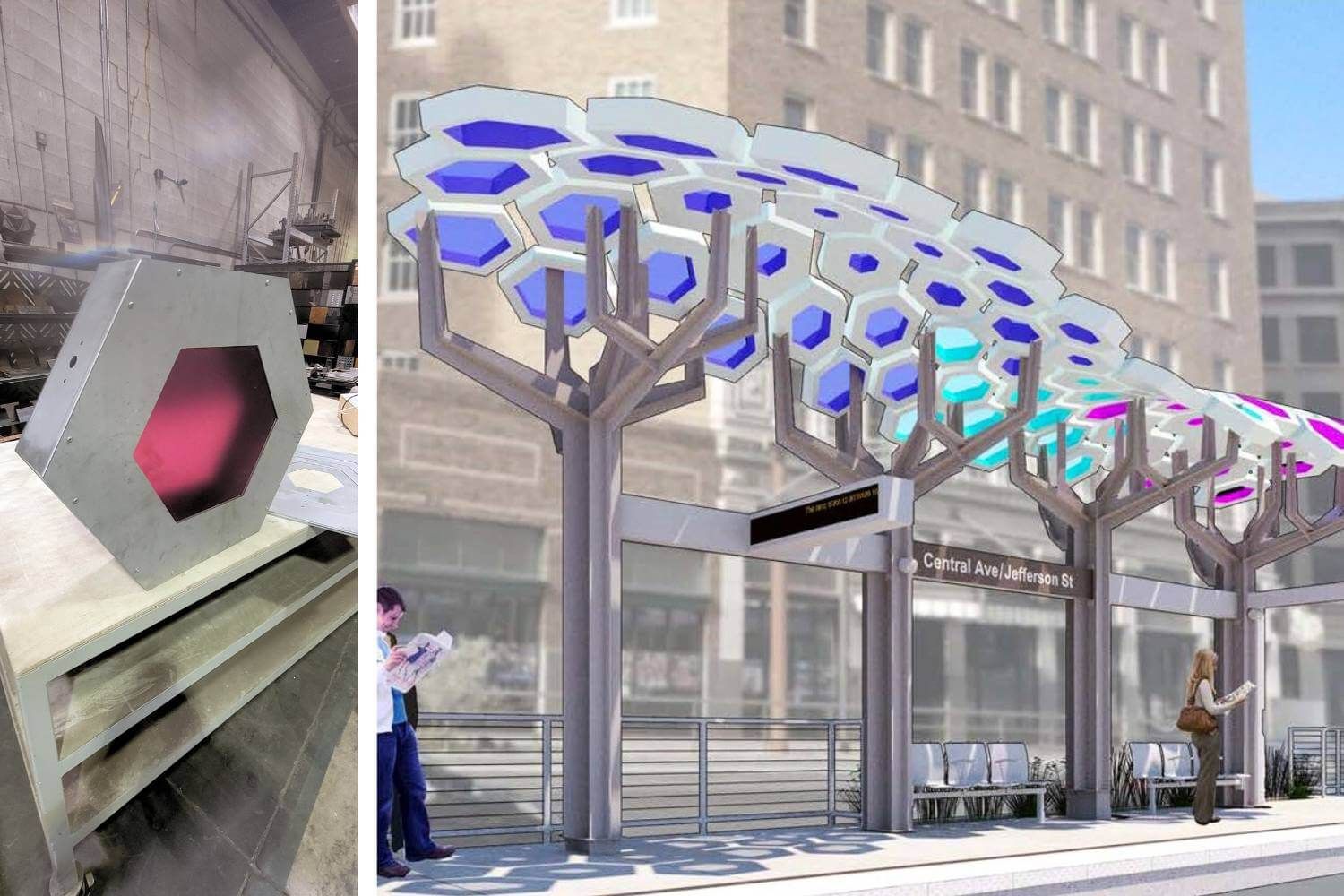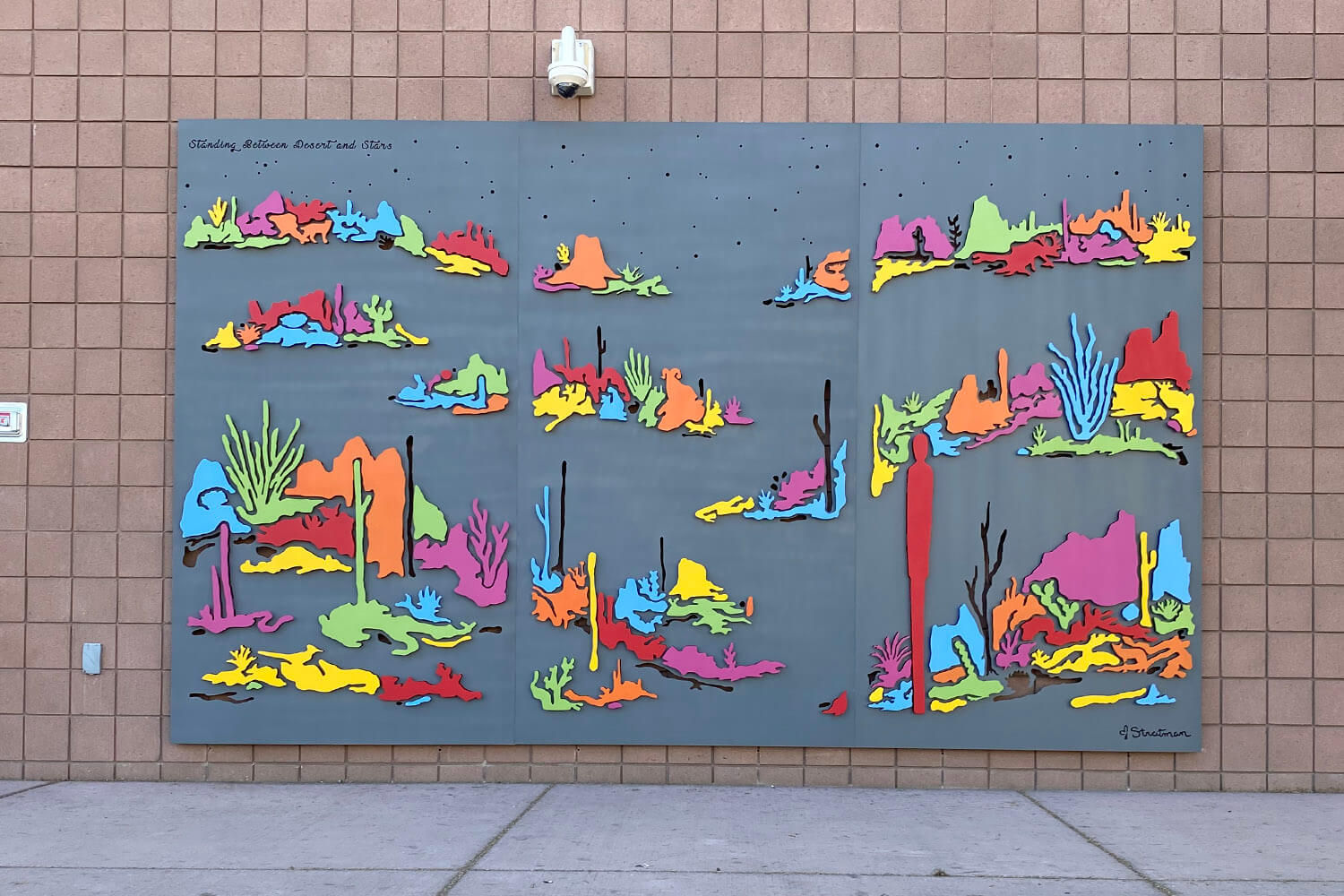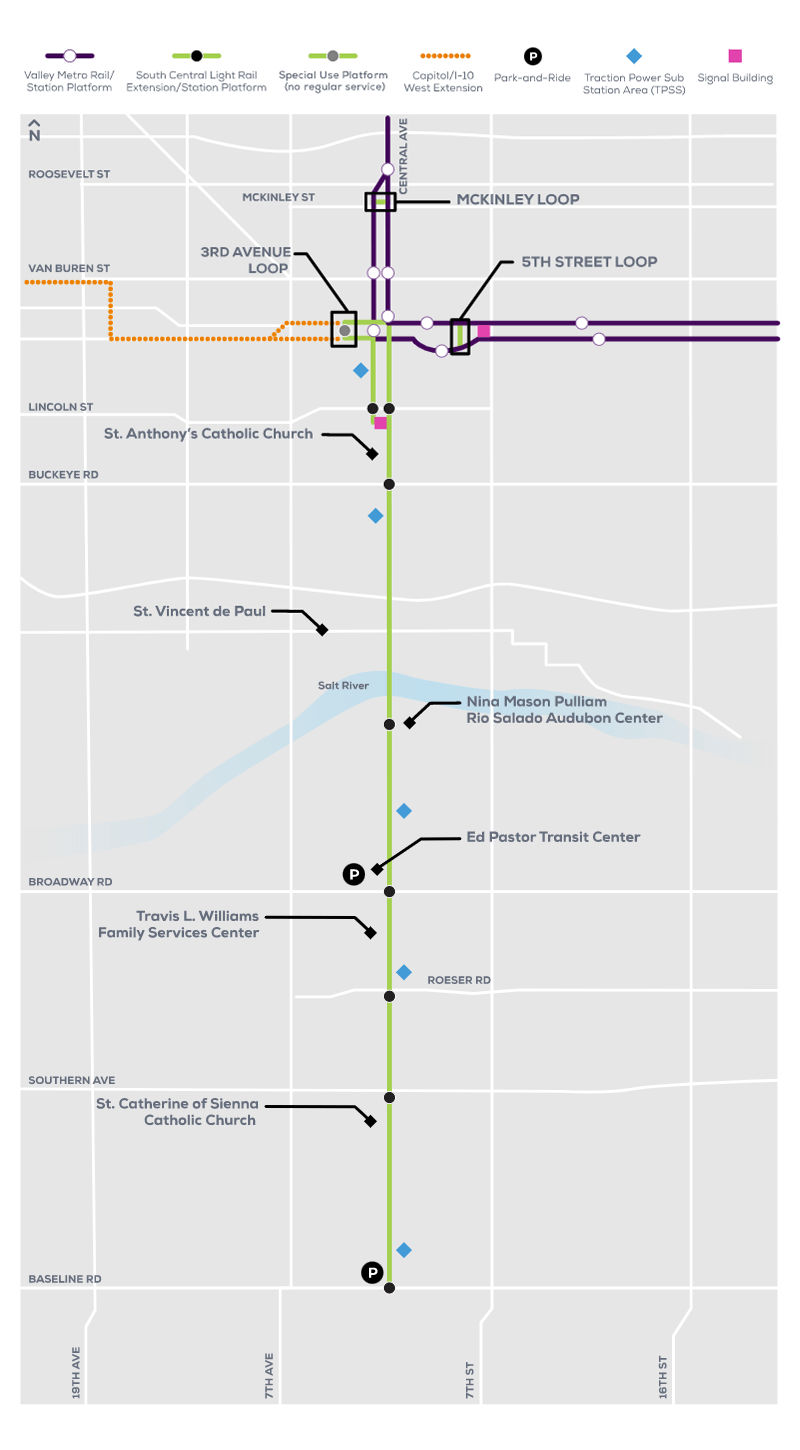Valley Metro Artists Create Functional Public Art in New Downtown Hub
If a single rider, among thousands of daily ridership, is cognizant enough, they’ll notice a trait that ties Valley Metro light rail stations together: the public art.
When the South Central Extension of light rail opens next year, stations will spotlight the work of 18 artists, represented as a mixture of canopies and individual artwork and displays.
The 5.5-mile extension connecting South Phoenix to Downtown includes eight stations, each acting as an artistic statement and unique wayfinding experience for riders to enjoy.
“The station has a purpose, to get people on and off the platform,” said MB Finnerty, Valley Metro’s Public Art Administrator. “So every artist has to move around and negotiate the same envelope on this little patch of land.”
A local panel chose the artists from a nationwide pool of submissions. This process selected artists for stations and public art based on their portfolio of past work rather than submitted proposals.

For the three new sites within the Downtown Hub (at both Washington and Jefferson Streets, between Central and 1st Avenue, and the Central Avenue station between CityScape), Valley Metro chose Jesus Eduardo-Magana and Paulina Bouyer-Magana, from the multi-disciplinary art and design collective Aphidoidea, local artist Janelle Stanley, and Jennyfer Stratman, who splits her time between Phoenix and Australia.
All the art shares subtle allusions and nods to the area’s history, the unique botanical imprint, and the people who’ve lived in Downtown communities.
Throughout the Downtown Hub is the work of Stanley, a local Navajo and Acoma artist. Her work highlights past cultures that created infrastructure to make the Valley habitable.
At the bottom of her massive 12-foot hourglass columns are visual representations of the dugouts in the Hohokam Canal System, used for rainwater storage or to expedite water flow along its channels. The design for each column breaks down into thirds, with transitionary tile patterns in the middle and the upper third depicting stained glass tableaus of historical local communities and cultures, like Japanese farmers in South Mountain, African American cowboys, or Day of the Dead iconography.
“These are visual highlights of cultures here,” said Stanley. “There’s a cultural thing about who [were] here first, who came second. That doesn’t matter to me, but more so that everyone is here because it’s not a competition.
A commonality among the works is that each piece encourages pedestrians to take notice of otherwise inconspicuous transportation infrastructure. The first artwork, installed in March, is a wall sculpture by Stratman.

Located along a north-facing parking garage wall across the street from the Arizona Science Center, abstract shapes reveal saguaros, ocotillos, and desert creatures the longer someone engages with it. After sundown, backlights illuminate the overlapping aluminum panels of her design further.
“People will hopefully engage with it in a fun way to spark their imagination,” Stratman said. “I was also considering children will pass by from the Arizona Science Center, who will stand there to find the story behind it and discover things.”
Another design element uniting the Downtown Hub stations are soon-to-be installed canopies, which look like succulents providing shade for commuters from “branches” while casting different colors onto the platforms.
Created by Aphidoidea, the firm conceptualized an idea based on how populations and communities settle around bodies of water, visually represented by the resilient succulent.
“We proposed to create this canopy that was ‘sprouting’ in the area,” Eduardo-Magaña said. “Succulents are very tolerant plants. They just need a little water, and then they can thrive on their own.”

Magaña’s canopy works both as public art and shading, which he calls “functional art.”
Additionally, each canopy of succulents contains about 16 resin pods wired to display programmable light shows at night. On every platform, this lighting invokes certain elements, such as the Sun and Earth. Eventually, stations will illuminate in holiday-themed colors.
Riders can expect station artwork to highlight local culture as the light rail expands into the South Central Expansion.
Although public art isn’t uncommon in Greater Downtown Phoenix and beyond, Magaña says the focus on activating spaces for daily wayfinding is a unique model for a community.
“You could tell there’s a genuine local interest in the art and public transportation because here in Los Angeles, it’s all treated the same, a mural by the entrance of each station which doesn’t change,” said Eduardo-Magaña. “Valley Metro has a very amazing portfolio of artwork at their stations.”
